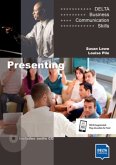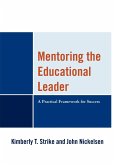Schade – dieser Artikel ist leider ausverkauft. Sobald wir wissen, ob und wann der Artikel wieder verfügbar ist, informieren wir Sie an dieser Stelle.
- Broschiertes Buch
- Merkliste
- Auf die Merkliste
- Bewerten Bewerten
- Teilen
- Produkt teilen
- Produkterinnerung
- Produkterinnerung
Proper presentations have the power to persuade and transform people and organizations. This is a book about the art of presenting.
Andere Kunden interessierten sich auch für
Proper presentations have the power to persuade and transform people and organizations. This is a book about the art of presenting.
Produktdetails
- Produktdetails
- Verlag: Globe Pequot Publishing Group Inc/Bloomsbury
- Third Edition
- Seitenzahl: 204
- Erscheinungstermin: 1. Februar 2018
- Englisch
- Abmessung: 254mm x 178mm x 11mm
- Gewicht: 395g
- ISBN-13: 9781442223677
- ISBN-10: 1442223677
- Artikelnr.: 48893841
- Herstellerkennzeichnung
- Libri GmbH
- Europaallee 1
- 36244 Bad Hersfeld
- gpsr@libri.de
- Verlag: Globe Pequot Publishing Group Inc/Bloomsbury
- Third Edition
- Seitenzahl: 204
- Erscheinungstermin: 1. Februar 2018
- Englisch
- Abmessung: 254mm x 178mm x 11mm
- Gewicht: 395g
- ISBN-13: 9781442223677
- ISBN-10: 1442223677
- Artikelnr.: 48893841
- Herstellerkennzeichnung
- Libri GmbH
- Europaallee 1
- 36244 Bad Hersfeld
- gpsr@libri.de
By Robert J. Garmston
Preface to the Third Edition How to Read this Book Acknowledgments PART I:
MAKING A DIFFFERENCE Chapter 1:To Midwife a Renaissance Teach to Transform
Be a Guide Speak to Four Audiences Engage Internal Resources Chapter 2:
Fostering Efficacy, and Cultural Mindfulness Empowering Audiences Making
Your Presentation a Gift Cultural Mindfulness PART II EVENT DESIGN Chapter
3: Developing A Designer's Mind Who's Coming? Aims, Outcomes, and Goals
Chapter 4: Selecting Content and Interactions Ratio of Content to Process
Time How Will the Audience Connect With the Content? An Information
Learning Cycle Chapter 5: Save Planning Time Nine Presentation Containers
The Two-Minute Speech Which Container Might You Use? Chapter 6: Before the
Opening Presentation as Theatre Setting the Mood With Music Taking Care of
You & Confidence PART III ON YOUR FEET Chapter 7: Agendas and Openings The
Public Agenda Your Personal Agenda How to Open Rapport is First Chapter 8:
Giving Clear Directions The First Three Principles Beyond the Basics
Mentally Rehearse Chapter 9: Delivering Your Message with Humor Dos and
Don'ts of Humor Why People Laugh Chapter 10: Responding to Questions
Personal Pause Time Be Strategic Response Criteria Research on Presenter
Responses Chapter 11: Closing Memorably PART IV MOVING BEYOND THE ORDINARY
Chapter 12: Anticipating Challenges How to Maintain Momentum Even in Slow
Downs Eight Strategies to Keep Your Audience Tuned In Keeping Awake and
Learning After Lunch Chapter 13: The Art and Science of Nonverbal Skills In
the Beginning The Brain and Body The First Five Minutes Chapter 14:
Brilliantly Co-Present Your First Event Understanding Co-Presenting Five
Forms Foundations Taking the Platform Chapter 15: Creating Graphics With
Ease and Confidence How To See What You Are Looking At "Suggestionism"
Considering Design Not Just Taking Up Space Lettering and Color The Process
of "Un-Naming" Some Basic Visual Display Formats Chapter 16: Using
Presentation Technology PowerPoint Tips Perils and Prizes of Presentation
Technology PART V POST SCRIPT AND APPENDICES Why Cats Have Clean Paws: The
Myths of Feedback Appendix A: Sample Client Materials List Appendix B: Room
Arrangement References About the Authors **Free Study Guide Available at
https://rowman.com/ISBN/9781442223684/The-Presenter's-Fieldbook-A-Practical-Guide-3rd-Edition#
MAKING A DIFFFERENCE Chapter 1:To Midwife a Renaissance Teach to Transform
Be a Guide Speak to Four Audiences Engage Internal Resources Chapter 2:
Fostering Efficacy, and Cultural Mindfulness Empowering Audiences Making
Your Presentation a Gift Cultural Mindfulness PART II EVENT DESIGN Chapter
3: Developing A Designer's Mind Who's Coming? Aims, Outcomes, and Goals
Chapter 4: Selecting Content and Interactions Ratio of Content to Process
Time How Will the Audience Connect With the Content? An Information
Learning Cycle Chapter 5: Save Planning Time Nine Presentation Containers
The Two-Minute Speech Which Container Might You Use? Chapter 6: Before the
Opening Presentation as Theatre Setting the Mood With Music Taking Care of
You & Confidence PART III ON YOUR FEET Chapter 7: Agendas and Openings The
Public Agenda Your Personal Agenda How to Open Rapport is First Chapter 8:
Giving Clear Directions The First Three Principles Beyond the Basics
Mentally Rehearse Chapter 9: Delivering Your Message with Humor Dos and
Don'ts of Humor Why People Laugh Chapter 10: Responding to Questions
Personal Pause Time Be Strategic Response Criteria Research on Presenter
Responses Chapter 11: Closing Memorably PART IV MOVING BEYOND THE ORDINARY
Chapter 12: Anticipating Challenges How to Maintain Momentum Even in Slow
Downs Eight Strategies to Keep Your Audience Tuned In Keeping Awake and
Learning After Lunch Chapter 13: The Art and Science of Nonverbal Skills In
the Beginning The Brain and Body The First Five Minutes Chapter 14:
Brilliantly Co-Present Your First Event Understanding Co-Presenting Five
Forms Foundations Taking the Platform Chapter 15: Creating Graphics With
Ease and Confidence How To See What You Are Looking At "Suggestionism"
Considering Design Not Just Taking Up Space Lettering and Color The Process
of "Un-Naming" Some Basic Visual Display Formats Chapter 16: Using
Presentation Technology PowerPoint Tips Perils and Prizes of Presentation
Technology PART V POST SCRIPT AND APPENDICES Why Cats Have Clean Paws: The
Myths of Feedback Appendix A: Sample Client Materials List Appendix B: Room
Arrangement References About the Authors **Free Study Guide Available at
https://rowman.com/ISBN/9781442223684/The-Presenter's-Fieldbook-A-Practical-Guide-3rd-Edition#
Preface to the Third Edition How to Read this Book Acknowledgments PART I:
MAKING A DIFFFERENCE Chapter 1:To Midwife a Renaissance Teach to Transform
Be a Guide Speak to Four Audiences Engage Internal Resources Chapter 2:
Fostering Efficacy, and Cultural Mindfulness Empowering Audiences Making
Your Presentation a Gift Cultural Mindfulness PART II EVENT DESIGN Chapter
3: Developing A Designer's Mind Who's Coming? Aims, Outcomes, and Goals
Chapter 4: Selecting Content and Interactions Ratio of Content to Process
Time How Will the Audience Connect With the Content? An Information
Learning Cycle Chapter 5: Save Planning Time Nine Presentation Containers
The Two-Minute Speech Which Container Might You Use? Chapter 6: Before the
Opening Presentation as Theatre Setting the Mood With Music Taking Care of
You & Confidence PART III ON YOUR FEET Chapter 7: Agendas and Openings The
Public Agenda Your Personal Agenda How to Open Rapport is First Chapter 8:
Giving Clear Directions The First Three Principles Beyond the Basics
Mentally Rehearse Chapter 9: Delivering Your Message with Humor Dos and
Don'ts of Humor Why People Laugh Chapter 10: Responding to Questions
Personal Pause Time Be Strategic Response Criteria Research on Presenter
Responses Chapter 11: Closing Memorably PART IV MOVING BEYOND THE ORDINARY
Chapter 12: Anticipating Challenges How to Maintain Momentum Even in Slow
Downs Eight Strategies to Keep Your Audience Tuned In Keeping Awake and
Learning After Lunch Chapter 13: The Art and Science of Nonverbal Skills In
the Beginning The Brain and Body The First Five Minutes Chapter 14:
Brilliantly Co-Present Your First Event Understanding Co-Presenting Five
Forms Foundations Taking the Platform Chapter 15: Creating Graphics With
Ease and Confidence How To See What You Are Looking At "Suggestionism"
Considering Design Not Just Taking Up Space Lettering and Color The Process
of "Un-Naming" Some Basic Visual Display Formats Chapter 16: Using
Presentation Technology PowerPoint Tips Perils and Prizes of Presentation
Technology PART V POST SCRIPT AND APPENDICES Why Cats Have Clean Paws: The
Myths of Feedback Appendix A: Sample Client Materials List Appendix B: Room
Arrangement References About the Authors **Free Study Guide Available at
https://rowman.com/ISBN/9781442223684/The-Presenter's-Fieldbook-A-Practical-Guide-3rd-Edition#
MAKING A DIFFFERENCE Chapter 1:To Midwife a Renaissance Teach to Transform
Be a Guide Speak to Four Audiences Engage Internal Resources Chapter 2:
Fostering Efficacy, and Cultural Mindfulness Empowering Audiences Making
Your Presentation a Gift Cultural Mindfulness PART II EVENT DESIGN Chapter
3: Developing A Designer's Mind Who's Coming? Aims, Outcomes, and Goals
Chapter 4: Selecting Content and Interactions Ratio of Content to Process
Time How Will the Audience Connect With the Content? An Information
Learning Cycle Chapter 5: Save Planning Time Nine Presentation Containers
The Two-Minute Speech Which Container Might You Use? Chapter 6: Before the
Opening Presentation as Theatre Setting the Mood With Music Taking Care of
You & Confidence PART III ON YOUR FEET Chapter 7: Agendas and Openings The
Public Agenda Your Personal Agenda How to Open Rapport is First Chapter 8:
Giving Clear Directions The First Three Principles Beyond the Basics
Mentally Rehearse Chapter 9: Delivering Your Message with Humor Dos and
Don'ts of Humor Why People Laugh Chapter 10: Responding to Questions
Personal Pause Time Be Strategic Response Criteria Research on Presenter
Responses Chapter 11: Closing Memorably PART IV MOVING BEYOND THE ORDINARY
Chapter 12: Anticipating Challenges How to Maintain Momentum Even in Slow
Downs Eight Strategies to Keep Your Audience Tuned In Keeping Awake and
Learning After Lunch Chapter 13: The Art and Science of Nonverbal Skills In
the Beginning The Brain and Body The First Five Minutes Chapter 14:
Brilliantly Co-Present Your First Event Understanding Co-Presenting Five
Forms Foundations Taking the Platform Chapter 15: Creating Graphics With
Ease and Confidence How To See What You Are Looking At "Suggestionism"
Considering Design Not Just Taking Up Space Lettering and Color The Process
of "Un-Naming" Some Basic Visual Display Formats Chapter 16: Using
Presentation Technology PowerPoint Tips Perils and Prizes of Presentation
Technology PART V POST SCRIPT AND APPENDICES Why Cats Have Clean Paws: The
Myths of Feedback Appendix A: Sample Client Materials List Appendix B: Room
Arrangement References About the Authors **Free Study Guide Available at
https://rowman.com/ISBN/9781442223684/The-Presenter's-Fieldbook-A-Practical-Guide-3rd-Edition#






